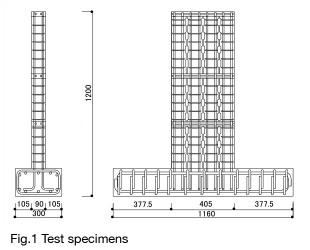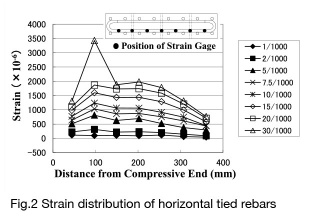- Home
- Faculty Members
- Department of Architecture and Civil Engineering
- Tadaharu Nakachi
Faculty of Engineering
Department of Architecture and Civil Engineering
- Key words
- Reinforced concrete structure, shear wall, core wall, confining steel, ductility, precast, axial load, horizontal tied rebar, cotter

Doctor of Engineering / Professor
Tadaharu Nakachi
Education
Graduate School of Engineering, Architecture and Building Engineering, Osaka City University (Doctoral Program)
Professional Background
Section Manager at Hazama Corporation
Consultations, Lectures, and Collaborative Research Themes
Technical consultation on reinforced concrete structures in the field of architecture, Technical consultation on precast structures in the field of architecture, Lectures on concrete materials for architecture
Main research themes and their characteristics
「Study on Structural Performance of Precast Reinforced Concrete Core Walls」
In recent years, the construction industry faces a critical labor shortage. On the construction of high-rise buildings, precast core walls are effective for labor saving in construction because they can be built more quickly than cast-in-place core walls. Regarding precast concrete multistory shear walls in high-rise buildings, lateral loading tests on wall columns having precast edge areas were conducted and their structural performance was examined. However, there is no research for full precast core walls.
In this paper, lateral loading tests on full precast wall columns (Fig.1) simulating the area near the corner of an L-shaped core wall were conducted in order to examine the seismic performance of full precast reinforced concrete core walls. The precast wall column was divided into precast columns, and the vertical joints between columns were grouted without cotter bars. Horizontal tied rebars were concentrated at the second and third floor level, and at the mid height level of the first story to connect the precast columns. Experimental parameter was axial load and quantity of horizontal tied rebar and cotter. Based on a comparison of the results of lateral loading tests, the effect of the horizontal tied rebars (Fig.2), the structural performance and the effect of experimental parameter to the structural performance of the full precast reinforced concrete core walls were clarified. The precast columns were unified without the cotter bars by the sufficient horizontal tied rebars and cotters in the vertical joint. The unified precast wall column showed the required strength and ductility.
「Study on Flexural Ductility Enhancement of Reinforced Concrete Walls」
In high-rise buildings with the core wall system, which consists of four L-shaped core walls, the axial load of the core wall is remarkably high under the action of a diagonal seismic force. In particular, the corner and the area near the corner of the L-shaped core walls are subject to high compressive stress. Reinforcing these areas is therefore considered effective for improving the deformation capacity of the core walls. Previously, lateral loading tests of multistory L-shaped reinforced concrete core walls were conducted. The test parameters were the concrete confinement at the corner. Based on the results of core wall lateral loading tests and compression tests on square and rectangular section columns, the deformation capacity of core walls was evaluated.
On the other hand, in wall columns with a rectangular section, the edge area is subjected to high compressive and shear stress at flexural yielding. Reinforcing this area is considered to be effective for improving the deformation capacity of the wall columns. This study examines the relationship between the confinement effect and the deformation capacity of the reinforced concrete walls. The evaluation was based on the results of core wall lateral loading and compression tests. Based on the results of lateral loading tests of L-, T-, H-shaped core walls and wall columns, an edge confinement index was proposed. This index is composed of the confinement effect of concrete, confinement area, axial stress, and depth-to-width ratio. The relationship between the edge confinement index and limit drift angle was shown.
Major academic publications
T. Nakachi, T. Saka : EXPERIMENTAL STUDY ON FLEXURAL DUCTILITY ENHANCEMENT OF REINFORCED CONCRETE WALLS BY TRANSVERSE CONFINING STEEL, Journal of Structural Engineering, Vol.49B, pp.112-117, 2003
T. Nakachi:EFFECT OF HORIZONTAL TIED REBARS ON PRECAST REINFORCED CONCRETE CORE WALLS, Proceedings of the 16th World Conference on Earthquake Engineering, Paper No.520, 2017
T. Nakachi:Experimental Study on Structural Performance of Precast Reinforced Concrete Core Walls with Horizontal Tied Rebars, Proceedings of the Japan Concrete Institute, Vol.39, pp.295-300, 2017


